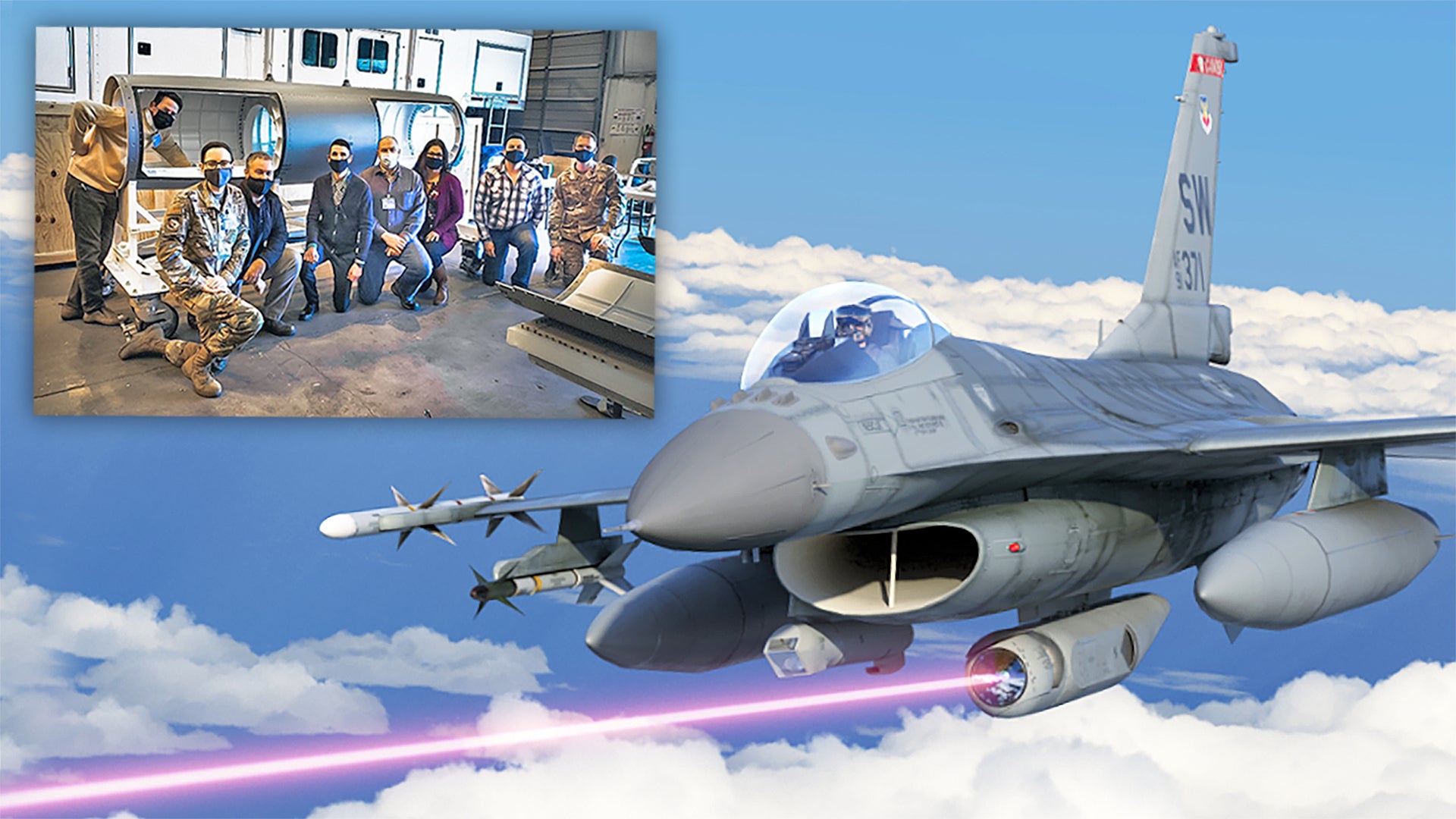The U.S. Air Force is about to receive the first major component for a prototype of a defensive tactical laser weapon designed to be carried externally on its combat jets. Boeing recently finished work on the pod assembly for this directed energy weapon, inside which the laser and beam control systems will eventually be installed.
The Air Force Research Laboratory (AFRL) announced today that it would take delivery of this pod later this month as part of its Self-Protect High Energy Laser Demonstrator program, or SHiELD, which has been ongoing since 2015. Lockheed Martin is under contract to develop the actual solid-state laser, while Northrop Grumman is supplying the beam control system. AFRL hopes to get those components by July, after which all three components will be combined to form the complete system.

“Receiving its first major assembly, the SHiELD pod structure will enable AFRL scientists and engineers to begin integration of the complete system, to include pod, laser, and beam control, and signals an end to the development and production stage of these important subsystems,” the Air Force press release said.
Ultimately, an advanced technology demonstration program will test the pod-based laser’s capabilities against surface-to-air and air-to-air missiles, with full systems tests now due to commence in Fiscal Year 2024. While SHiELD is initially concerned with proving the potential for active defense of fighter jets in high-risk environments, there is official hope that the system could also find its way onto larger, slower-moving combat and combat support aircraft, too.
However, as the AFRL admits, using a directed-energy laser to down a hostile supersonic missile is by no means easy. In its press release, the organization says the technical challenges involved are “tremendous.”
“These are hard problems we are solving,” said Dr. Jeff Heggemeier, SHiELD program manager. “Imagine the disturbances and stresses — wind speeds, turbulence, and quick aircraft maneuvers that a laser system would have to perform under. We had to solve those challenges first — and that took time.”
Heggemeier was acknowledging the delays that have beset SHiELD, including the challenges of developing subsystems small and light enough to fit inside a pod that can be carried by a tactical aircraft. The significant breakthroughs that have been required to make a laser that is small enough, but also powerful enough, to be tactically relevant, are something that we have explored in detail in this previous article.
Meanwhile, the nature of the technical issues that the program has experienced remain unclear, but The War Zone has, in the past, examined some of the program’s setbacks, the most recent of which pushed back planned tests by two years. This was blamed on the combined result of technical difficulties and slowdowns due to the COVID-19 pandemic.
Originally, the service had aimed to have a podded prototype system ready for actual flight tests by 2021 leading toward an actual operational capability by the end of the decade.
So far, Boeing flew a pre-prototype pod shape — without its internal subsystems — aboard an Air Force F-15 fighter in 2019. During ground tests, meanwhile, a representative laser, known as the Demonstrator Laser Weapon System (DLWS), successfully shot down multiple air-launched missiles over White Sands Missile Range in New Mexico that same year.

We don’t yet know the exact power class of the DLWS laser, although Heggemeier previously said it was in the “tens of kilowatts.” Lockheed Martin has already delivered a 60-kilowatt-class laser weapon system to the U.S. Army as part of the development on ground-based, vehicle-mounted laser weapons.
“Those critical demonstrations show that our directed energy system is on track to be a game-changer for our warfighters,” said Dr. Kelly Hammett, director of AFRL’s Directed Energy Directorate. “The ability to shoot down missiles in flight, and operate in denied environments, increases the advantage we have over our adversaries.”
“We feel confident that after years of development and the testing that has occurred, that SHiELD will do what we’ve said it can,” Heggemeier said. “And that is a big win for our airmen.”
Should SHiELD prove its potential, it could lead to a game-changing podded laser defense system for all manner of military aircraft. This would offer numerous advantages over expendable countermeasures such as infrared flares or chaff, or electronic warfare systems, directly targeting an incoming missile and pumping out directed energy from an effectively bottomless magazine.
On the other hand, lasers are affected by atmospheric conditions, which could reduce the range and efficacy of the beam. Another disadvantage is the fact a laser can only engage a single target at a time, so there is potential for it to be overwhelmed. Ultimately, it might be expected that a future laser missile defense system would form part of a layered self-protection suite alongside various other advanced countermeasures, expendable jammers, hard-kill interceptors, and towed decoys, for example.

Beyond that, a production version of the SHiELD pod, or similar, could eventually be used in an offensive role, too, complementing short-range missiles and gun armament for fighters during within-visual-range air combat, or even attacking certain types of targets on the ground.
Finally, it seems, the SHiELD is now on the way to at least providing a pod that can be used for the technology demonstration. That will be good news for the U.S. military in general, which is meanwhile busy working on sea-based and land-based laser weapons. The promise of a laser-wielding fighter that will be able to swat down enemy missiles perhaps just got a little bit closer.
Correction: The original version of this piece incorrectly stated that the SHiELD dated back to 2013. The program began in 2015. It also said that the Demonstrator Laser Weapon System (DLWS) was a Lockheed Martin design. General Atomics developed that laser itself, while AFRL provided the rest of the subsystems.
Contact the author: thomas@thedrive.com
